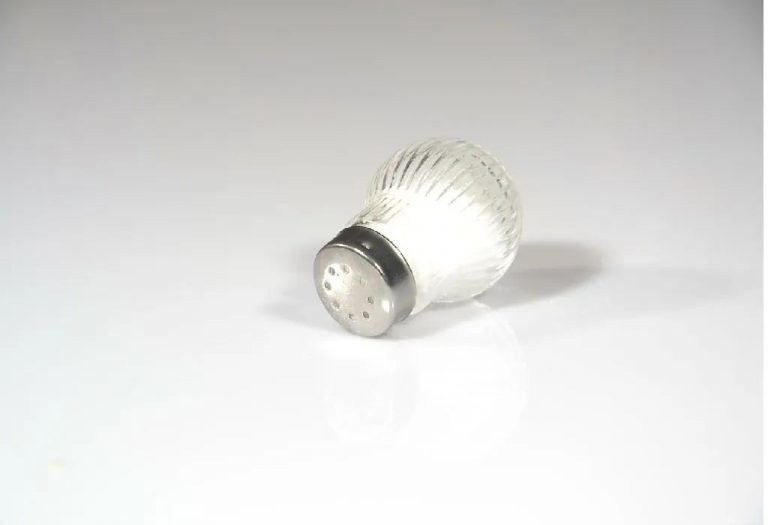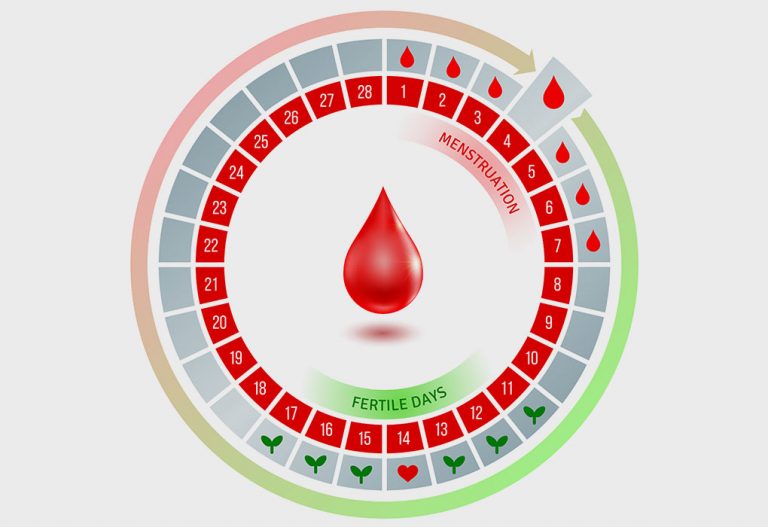How to Test for Pregnancy With Salt?

Expecting a little baby along life’s journey is a joy for most people. But a lot of trying, patience and preparation goes on before this phase begins. At such times a couple may want to increase their chances of getting pregnant as much as possible by following the right diet, the right sleep patterns, tracking for ovulation, the right sex positions, etc. Still, pregnancy may not happen easily for some. A skipped period is one of the biggest signs of pregnancy, but sometimes the excitement may lead you to purchase a pregnancy test earlier than the expected period dates. However, if you have been trying for a while, buying multiple tests can be an expensive affair. In fact, there are even ways to check for pregnancy without taking a test. Along with store-bought tests and kits, there are certain homemade pregnancy tests too that have been passed on for years. Pregnancy salt test, tests with sugar, bleach, toothpaste, vinegar or soap water are the most common ones.
What Is Pregnancy Test Using Salt?
Home pregnancy tests are non-medical methods of testing for pregnancy and were formulated when pregnancy testing kits were not available. As mentioned earlier, people use pregnancy tests with salt, sugar, bleach and many other ingredients to check for conception. All tests work on one principle – they detect the level of hCG hormone in urine. The salt pregnancy test involves a homemade approach using just two ingredients: salt and urine, mixed in a transparent and sanitized container. Advocates of this method suggest that if pregnancy is present, the salt may interact with human chorionic gonadotropin (hCG), a hormone that becomes detectable in both blood and urine following embryo implantation in the uterus. Notably, this hormone is also targeted by commercial home pregnancy tests available in stores.
Let’s look at DIY pregnancy tests with salt in this article. How does salt help detect the hCG hormone in urine? Read on.
When Should You Do the Test?
If you are opting to try the salt and pee pregnancy test, you also need to also when it would be most effective. To get the most accurate results with this salt pregnancy test, you need to try it on the fifth day of ovulation. Since you will already be tracking your ovulation dates, this should not be a problem to figure out. However, before you try this method out, let’s look at exactly what the process is and how do you go about testing for pregnancy using salt.
How Accurate Is Pregnancy Test by Salt?
The pregnancy test using salt is not scientifically reliable or accurate. This DIY method, which involves mixing urine with salt to observe any reactions, lacks scientific validation and has no standardized procedure. There’s no evidence to support that the interaction between salt and the pregnancy hormone hCG can accurately indicate pregnancy. For reliable results, it’s best to use commercially available pregnancy tests that are specifically designed to detect hCG or consult with a healthcare provider for confirmation and guidance.
How to Test Pregnancy With Salt?
Before we read about homemade pregnancy tests, we were surprised to know what reactions urine and common household supplies may cause! We know you are too. And while it’s tough to believe the authenticity behind a pregnancy test using salt, it could be a fun try!
So, how to check pregnancy at home with salt? The procedure for doing this homemade test is simple.
- Materials Needed – Gather some table salt, a transparent container (preferably glass), and an alarm to ensure the use of the first morning urine, which contains the highest concentration of the pregnancy hormone hCG (if present).
- Collecting the Sample – Upon waking, use the alarm as a reminder to collect the first urine of the day. This sample is believed to have the highest concentration of hCG.
- Adding Salt – To the collected urine in the transparent container, add roughly three-quarters of a teaspoon of table salt.
- Observation Period – Wait for about one to two minutes to observe any reactions within the mixture.
- Interpreting Results – A milk-like curdling appearance or the presence of white, crumb-like particles in the mixture is interpreted by proponents of this method as a positive sign of pregnancy. You can follow up with another test to be sure!
In case you are still unsure about the procedure and what a positive result looks like, here’s a video with examples of both positive and negative test results using this salt pregnancy test!
- Try this test with the first urine of the day, as chances of pregnancy detection are more accurate then.
- The urine curdles and foams if you are pregnant and remains unchanged if you are not.
- The high HCG levels in the urine of a pregnant woman react with the salt, forming the foam.
How to Read the Results of Pregnancy Test Using Salt?
Reading the results of a pregnancy test using salt involves observing the reaction between the salt and the urine after mixing them. Here’s an explanation of how the results are typically interpreted, bearing in mind the scientific accuracy of such a method is highly questionable:
1. Timing and Sample Collection
It’s suggested to perform this test with the first urine of the morning. The rationale is that the first urine is more concentrated and, if pregnant, would contain higher levels of the hCG hormone, which is believed to increase the test’s chance of detecting pregnancy.
2. Observation of Reaction
After mixing the salt and the urine in a clear container:
- Positive salt pregnancy test: If the mixture curdles and foams, it’s taken as an indicator of pregnancy. The belief is that the hCG hormone in a pregnant woman’s urine reacts with the salt, causing this foaming effect.
- Negative test results: If the urine remains largely unchanged without curdling or foaming, it’s interpreted as a sign that one is not pregnant.
3. Interpretation Nuances
The process of interpreting the curdling and foaming can be subjective. Without specific chemical indicators or measurements, what one might consider a “foam” or “curdle” could vary greatly from person to person.
Despite these instructions, it’s crucial to remember that the presence of hCG is what over-the-counter pregnancy tests are designed to detect, but they do so with specific chemical markers and controlled reactions that have been scientifically validated. The idea that hCG would cause salt to curdle or foam lacks a scientific foundation, and the salt pregnancy test results could be influenced by many factors, including the concentration of the urine and the type of salt used.
Expectations From a Salt Pregnancy Test
With the salt pregnancy test, you can expect to get early results of pregnancy by a cheap and effective method.
However, most couples feel like store-bought kits may provide a more accurate answer. The truth is much like these homemade pregnancy tests, the store-bought ones too do not give you a guarantee of accuracy. These tests must be done at your and your partner’s own discretion. Know that these can only satiate your curiosity and give you some hope as you wait to conceive. Eventually, an appointment with your doctor and an ultrasound will give you the most accurate result, you’ll just have to wait a little longer.
Alternative Options to Check Your Pregnancy at Home
Home-based pregnancy testing can be an early step in discovering if you might be pregnant. While over-the-counter pregnancy tests are the most common method, there are several alternative ways to check for pregnancy at home, each with varying degrees of reliability. Remember, for a definitive confirmation, consult a healthcare provider.
1. Commercial Over-the-Counter Pregnancy Tests
The most reliable alternative for home pregnancy testing involves using commercial over-the-counter pregnancy tests. These tests are designed to detect the presence of the human chorionic gonadotropin (hCG) hormone in your urine, which is produced after a fertilized egg attaches to the lining of your uterus. Over-the-counter tests are highly accurate when used correctly and after the missed period. They come with instructions, and results are usually easy to read, often showing lines, plus or minus signs, or digital readings to indicate if you’re pregnant or not.
2. Pregnancy Test Apps With Smart Technology
Some newer technologies involve apps that claim to work with traditional urine tests to help interpret the results more accurately using your smartphone camera. These apps can reduce the uncertainty of reading a traditional pregnancy test by providing clearer digital results. Users take a picture of their test strip, and the app analyzes the results. However, the accuracy of these apps largely depends on the quality of the traditional test used and the correctness of the test-taking process. While these apps can offer a modern convenience, the reliability of the results should be considered as variable as the tests they interpret.
3. Monitoring Basal Body Temperature (BBT)
Another method involves tracking your basal body temperature (BBT) over time to detect early signs of pregnancy. Your BBT is your lowest body temperature in a 24-hour period. After ovulation, if you’re pregnant, there will typically be a slight increase in your basal body temperature, sustained for more than two weeks. You’ll need a basal thermometer to accurately measure these small changes. This method requires daily measurements over time to establish a baseline and identify the slight increase in BBT that can suggest pregnancy. While tracking BBT can indicate potential pregnancy, it’s not definitive and can be influenced by many factors, such as illness, sleep patterns, and alcohol consumption.
When to Consult the Doctor?
If you think you might be pregnant, it’s advisable to seek medical advice. Early signs of pregnancy, like abdominal discomfort, exhaustion, changes in appetite, nausea, increased need to urinate, and a darkening of the areolas, can indicate potential pregnancy. Furthermore, if you’ve skipped your menstrual cycle for two straight months and still receive a negative result from an at-home pregnancy test, it’s important to consult with a healthcare provider.
FAQs
1. Is there a specific type of salt that should be used for a salt pregnancy test?
No specific type of salt is recommended for a salt pregnancy test because the method itself lacks scientific validation. Table salt is commonly used in anecdotal descriptions of the test, but there is no evidence to suggest that different types of salt would affect the outcome differently.
2. Can the salt pregnancy test detect early pregnancy?
The salt pregnancy test is not a reliable method for detecting early pregnancy or any pregnancy stage due to its lack of scientific basis. Over-the-counter pregnancy tests and medical consultations are the most reliable ways to determine early pregnancy.
3. How often should you repeat the salt pregnancy test for accurate results?
Given the salt home pregnancy test’s unreliability and lack of scientific backing, repeating the test is not likely to provide accurate results. For those seeking confirmation of pregnancy, using a clinically validated home pregnancy test or visiting a healthcare provider is recommended.
In the meantime, enjoy spending time together and enjoy each moment of baby making, after all these intimate moments may be harder to find when you have a little bundle of cuteness crying his eyes out all night!
Have a happy baby-making phase and a happier pregnancy!
References/Resources:
1. Pregnancy; US. Food & Drug Administration; https://www.fda.gov/medical-devices/home-use-tests/pregnancy
2. Home pregnancy tests: Can you trust the results?; Mayo Clinic; https://www.mayoclinic.org/healthy-lifestyle/getting-pregnant/in-depth/home-pregnancy-tests/art-20047940
3. Nepomnaschy. P, Weinberg. C, Wilcox. A, Baird. D; Urinary hCG patterns during the week following implantation (Human Reproduction); National Library of Medicine; https://www.ncbi.nlm.nih.gov/pmc/articles/PMC5330618/; February 2008
4. Pregnancy Tests; Planned Parenthood; https://www.plannedparenthood.org/learn/pregnancy/pregnancy-tests
5. Knowing if you are pregnant; U.S. Department of Health & Human Services, Office on Women’s Health; https://www.womenshealth.gov/pregnancy/you-get-pregnant/knowing-if-you-are-pregnant
6. Pregnancy tests; U.S. Department of Health & Human Services, Office on Women’s Health; https://www.womenshealth.gov/a-z-topics/pregnancy-tests
7. The Thin Blue Line: The History of the Pregnancy Test; National Institutes of Health; https://history.nih.gov/exhibits/thinblueline/timeline.html
Also Read:
Taking a Pregnancy Test at Night
Baking Soda Test for Pregnancy
Urine Pregnancy Test – At Home and Clinic
Digital Pregnancy Test – How Does It Works?
Was This Article Helpful?
Parenting is a huge responsibility, for you as a caregiver, but also for us as a parenting content platform. We understand that and take our responsibility of creating credible content seriously. FirstCry Parenting articles are written and published only after extensive research using factually sound references to deliver quality content that is accurate, validated by experts, and completely reliable. To understand how we go about creating content that is credible, read our editorial policy here.























